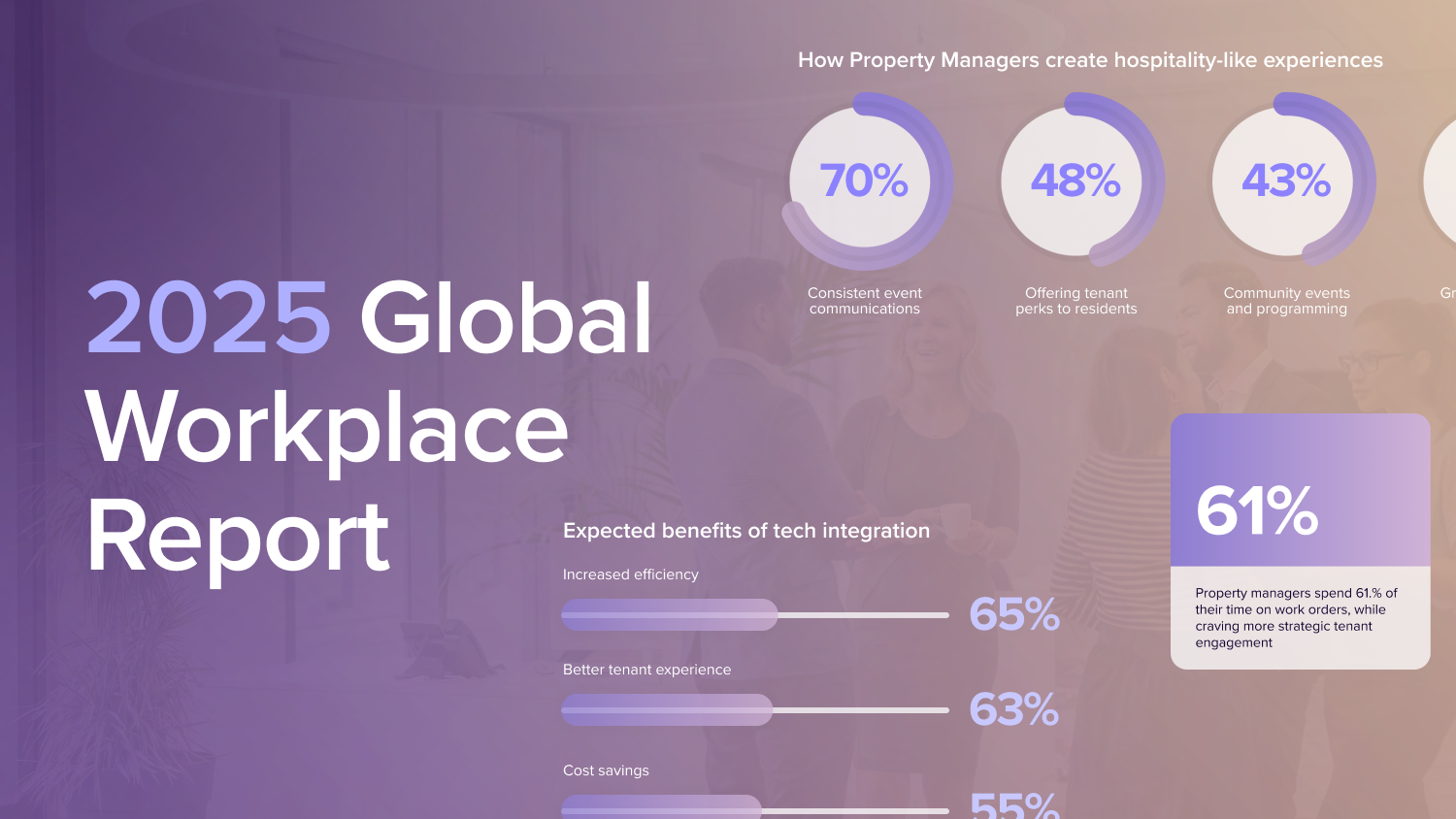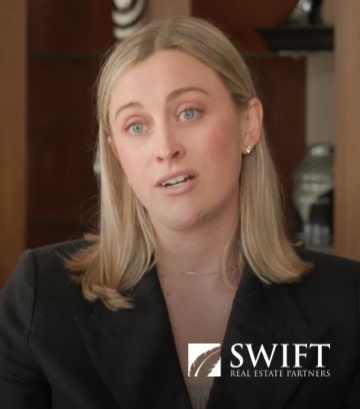In recent years, commercial real estate marketing has become a whole new ballgame —and that means you need a whole new game plan. Let’s break down what’s changed and what you can do to adapt your marketing activities to take advantage of the shift.
What has changed?
Over the past few years, an evolving professional lifestyle has created a fundamental shift in commercial real estate, from how tenants shop for a property to their requirements for the spaces they lease. Here are some of the most significant changes to consider as you approach modern marketing for your commercial real estate properties:
Tenants want to start their search online.
In the past, tenants were willing to hit the pavement and tour space after space. Limited technology simply couldn’t deliver a quality remote tour experience, so most brokers weren’t offering it. But now that the technology is readily available, potential tenants are embracing it. As VTS founder Nick Romito said, “Now, tenants want to see five spaces they know will work, not 50 that don’t.” Today you have to start the search process with videos and virtual tours, then follow up with in-person tours.
Tenants want a lifestyle, not just a space.
In a remote-work world where office space has to compete with the comforts of home, locations and floor plans have taken a backseat to automation and amenities. As Romito observed, “What you offer at that building has to make that person more productive than they are at home.” Effective marketing must do more than highlight square footage —it should showcase a streamlined workplace lifestyle that will entice workers off their couches and back into the office.
Tenants want to share decision-making.
Traditionally, the head of real estate and/or CFO have handled the search for a new space. But with the shift in focus to worker satisfaction and productivity, company leadership is bringing in additional employees and managers to help with real estate decisions. “These are the folks in charge of the culture and company values, and they’re coming in to assess, does this building, not just the space, speak to the things our company stands for?” Romito said. “Will it provide enough incentive for us to get our people to spend valuable time here three to four days a week?”
What does this mean for your marketing?
This shift from property-centered leasing decisions to worker-centered leasing decisions requires a corresponding shift in marketing strategy. As you create your commercial real estate marketing plan, be sure you’re compensating for this shift by focusing on these two overarching goals:
Build awareness of what you have to offer.
Basic listings worked fine when it was all about leasable square footage, but now listings must do more. Focus on educating your clients on your property’s amenities and convenience services, especially the less obvious features, like integrated tenant technology. Highlight features that will draw employees away from their homes and into the office.
Build confidence in both your product and your process.
Giving clients a high-quality website with useful tools allows them to loop in all decision makers for an easier, more efficient leasing process from start to finish. Plus, it gives a great first impression, and it will make them want to keep working with you even after the lease is signed. Remember, the best marketing strategies for commercial real estate are just as much about retaining good tenants as they are about generating new leads.
How do I meet these marketing goals?
Now that you know the market and what you’re aiming to accomplish, let’s talk tactics. Here are the essential building blocks of a solid marketing strategy in today’s commercial real estate industry.
Identify your value proposition.
Knowing what sets you (or your properties) apart from the competition is key to driving your messaging and identifying the channels you’ll use to deliver it to potential customers. Maybe your properties serve a niche market, or maybe you deliver tenant services that your competitors don’t. Study your competition so you can use your marketing to highlight strengths in your properties and services that make you stand out from the crowd.
Determine your audience(s)
Like your value proposition, your target audience — or audiences — will determine the types of messaging you use and where you share it. Are your spaces better suited to entrepreneurial startups or larger, more established companies? Take a look at what your current tenants have in common. Honing in on your demographic will help you laser-focus your marketing efforts for a greater return on your investment.
Establish (or embrace) your brand identity.
Marketing is about more than just eye-catching ads. Effective marketing campaigns establish a brand’s personality as if it were a person. Is your brand friendly and relaxed? Is it chic and mysterious? If you already have a brand personality, be sure your marketing is authentic to that personality. If you have a diverse portfolio, consider creating unique brand identities for each property to more effectively market to your ideal tenants and investors.
Identify the most effective channels to use.
Knowing your value proposition, audience, and brand identity is foundational to this step. For example, if you’re targeting entrepreneurial startups, you may want to use social media trends to share content. If you’re aiming for more established businesses, focusing on press releases might be more effective. Know where your ideal tenants spend their time, and allocate your marketing time and money to those channels.
Set specific, measurable goals.
As the Cheshire Cat told Alice in Wonderland, if you don’t know where you’re going, “Then it doesn’t much matter which way you go.” Base your key performance indicators on measurable metrics like deals closed, social media engagement, or leads generated. Then, use tools like Google Analytics or the built-in analytics in VTS Market to track what’s working and what isn’t. You can also make more specific goals, like a deadline for having a property leased or a cap on your number of vacancies.
Create a budget, but be flexible.
Setting a marketing budget can feel a bit like gambling, because it’s hard to say how much of a return you’ll see on your investment. But remember thatit’s okay to take a wait-and-see approach, because marketing is a long game. When crunching the numbers, keep some cash in reserve so you’re prepared to pivot once you see which strategies are paying off. Infuse successful campaigns with more capital to keep the momentum going.
Develop your marketing materials.
When most people think of marketing activities, they think of things like digital ads and catchy slogans, but these marketing materials don’t come until after you’ve laid the groundwork. Marketing materials should be designed to entice and inform, but in a coordinated, cohesive way that builds tenant confidence in your brand. Laying the groundwork of steps 1 - 6 will prevent you from wasting too much time and money on materials that aren’t effective. See below for a list of the kinds of materials you might want to use.
Get everyone on the same page.
From the person answering the phone to the person closing the deal, cohesiveness throughout your organizationis essential to delivering a quality experience for your clients. Using a comprehensive digital platform like VTS Market — especially when it’s used with the full VTS platform — ensures that your brand identity, messaging, and inventory are accessible to everyone involved in the leasing process. This creates a consistent, streamlined experience for your clients.
What does today’s commercial real estate marketing look like?
Commercial real estate marketing ideas are virtually limitless, but if you want to be competitive, here are your must-have marketing tools:
- A high quality website: At a minimum, your site should include listings, a blog, testimonials, and contact information. Consider spending the extra time and money to have your site optimized for search engines (SEO).
- Professional photography: Top-notch photography is a must. In commercial real estate digital marketing, a (quality) picture really is worth a thousand words.
- Professional video: Create ads that showcase the lifestyle your properties are offering —drone footage is a nice touch. Video interviews with CRE pros and testimonials from satisfied clients are also valuable assets for your website.
- Virtual tours: Hire a videographer or create a 3-D rendering for a virtual walk-through to help potential tenants get a good feel for the space.
- Floor plan PDFs: Tenants and investors will appreciate the convenience of having access to interactive floor plans when it comes to communicating with their teams.
- Social media presence: Visual media like Instagram is great for keeping your properties on people’s radar, while LinkedIn is an ideal platform for you to establish your reputation as an industry thought leader.
- Blog: Offering something of value to potential clients in the form of industry news and local market reports establishes credibility, keeps your site current, and boosts your reputation as a knowledgeable CRE professional.
- Signage: It’s old school, but it works. Ensure that your leasable properties have clear, tasteful, branded signage so interested tenants can connect with you.
Once you have the essentials in place, your commercial real estate marketing strategies could include any of the following, if appropriate for your target market and message:
- Tour books: A high-quality tour book with relevant property facts helps prospective tenants make an informed decision, and it makes you look prepared and professional. VTS Market offers tools for both physical and virtual tour books.
- Direct mail: Again, it’s old school, but when you curate your distribution list to just the right audience, it can create traction.
- Print brochures: If you want to avoid constantly having to update your paper media, use QR codes. You can update your website without having to mess with your brochures.
- Email campaign: Sending out company newsletters with valuable industry info keeps your business front and center in your clients’ minds. Email marketing should be short and sweet with a clear call to action. Constant Contact is a good option for this.
- Press releases: When potential clients see your name associated with a prominent local newspaper, magazine, or website, you get instant credibility. Plus, it’s great exposure– and it’s free!
- Networking events: Hosting and attending conferences, webinars, and other networking events is a good way to get your name out there and generate leads.
- Microsites: Microsites are especially helpful if you have a diverse portfolio because you can create a different brand for each commercial property to target your ideal tenant.
- Guest posts: Like press releases, a guest post on a prominent industry blog or website offers you exposure, backlinks, and street cred.
- Infographics: Infographics are not only eye-catching, they are also highly shareable and offer value to your social media followers–and they mark you as an industry pro. Check out Infographic World (IGW) for services.
- Remarketing: Have your ads appear for Google users after certain keywords are searched for with Google AdWords.
- Volunteer or sponsor a charity: Partnering with others in bettering your community is an excellent way to get your name out there in a positive light —and you get to enjoy the benefits of a stronger community.
- Google Business Profile: A Google Business Profile allows you to engage with clients, increase SEO, analyze reach, and manage what clients see when they search for your business.
Some final advice
While it can be tempting to try to do it all, remember– less may be more. It’s better to utilize relevant data to employ just a few of these marketing tools than to haphazardly use all of them without a defined, measurable goal. Using digital marketing tools like VTS Market can help you gain the insights you need while also automating and streamlining many of your essential marketing efforts. As a result, you’ll have the bandwidth to expand your reach to even more potential tenants and investors.





